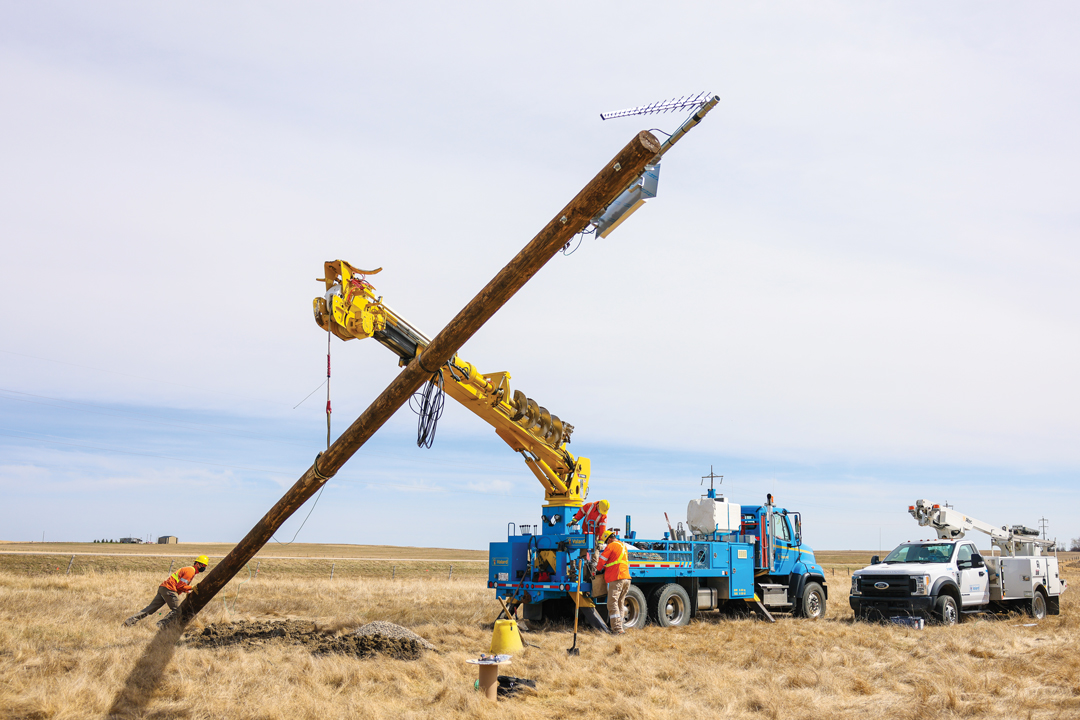COVERAGE COMPARISON
BY DANIEL STEFNER • PHOTO COURTESY OF OLDS COLLEGE
Can you hear me now?
Rural regions across the Prairies have long suffered from poor basic network and cellphone coverage. However, as farmers continue to ramp up their use of smart ag technology, the need for quality internet connection becomes more crucial, and the lack of connectivity becomes more frustrating.
Following an earlier research trial, the Smart Ag Applied Research team within the Olds College Centre for Innovation (OCCI) is now at work on two additional projects whose focus is to improve rural connectivity. These trial projects examine unique hardware solutions to bring reception to dead zones on the College’s Smart Farm property, such as the 315-acre Pitstra farm located west of Carstairs where cellphone coverage is effectively non-existent.
An assortment of equipment and technology now on the market can be used to create various types of networks or re-broadcast signals. Our goal is to determine which technology works best in various scenarios.
In 2021, our team had a 4G LTE solar repeater tower deployed at Pitstra, but the tower did not solve the location’s connectivity issues. As we learned, a repeater only works if it receives a signal clear enough to repeat. However, for a farmer who has great reception in a particular spot in their yard, such as the top of a grain leg, the ability to repeat the incoming signal across the rest of their farm would be very beneficial.
The team is now testing two more solutions. One is a Wi-Fi based system and the other a private LTE network that utilizes satellite-based internet.
The Wi-Fi based equipment is manufactured by Zetifi, an Australian company. It offers both mobile and permanent install solutions. ZetiRover, its mobile product, is intended for vehicle installation. It has the capability to pick up multiple mobile and Wi-Fi networks to generate a Wi-Fi hotspot for users in and around the vehicle. Its permanent installation product, ZetiCell, broadcasts a long-range Wi-Fi network that uses a satellite internet service or a 4G LTE connection. These products can work together to enable the mobile unit to pick up the signal of the permanent broadcast equipment from up to three kilometres away. OCCI is testing how these products function in the Alberta climate and validating the equipment’s range of coverage.
Meanwhile, the team is conducting a trial of the Star Solutions private LTE network. While the British Columbia company offers multiple products, OCCI is evaluating the effectiveness of its mobile equipment in agricultural settings. When paired with a satellite-based internet provider such as Starlink, the Star Solutions equipment generates a private network with a maximum range of four kilometres. This range is dependent on the height of the antenna, coverage terrain and equipment transmit power. To test it, OCCI is using the equivalent of a portable light tower trailer with a retractable vertical mast to extend the antenna to 10.5 metres. The portability of this equipment allows it to establish connectivity in a target area and generate a usable internet connection.
The goal of each project is to identify the feasibility for agricultural operations to invest in and deploy their own systems and further determine range, cost, user experience and life expectancy. The initial results from both projects are expected by midsummer 2023.
To find more information about these projects, visit oldscollege.ca/smartfarm.
Daniel Stefner is a smart agriculture project lead and farm liaison with the Olds College Centre for Innovation.







Comments